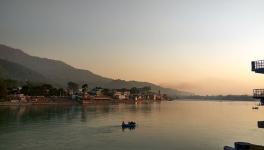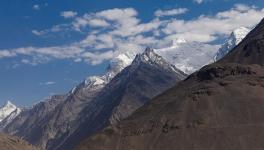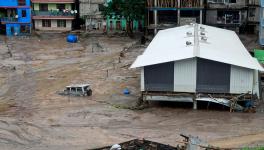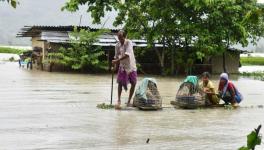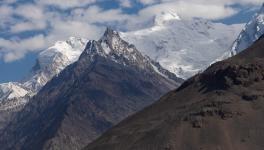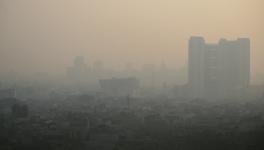More Than 7,000 Lives Lost to Glacial Lake Outburst Floods in High Mountain Asia
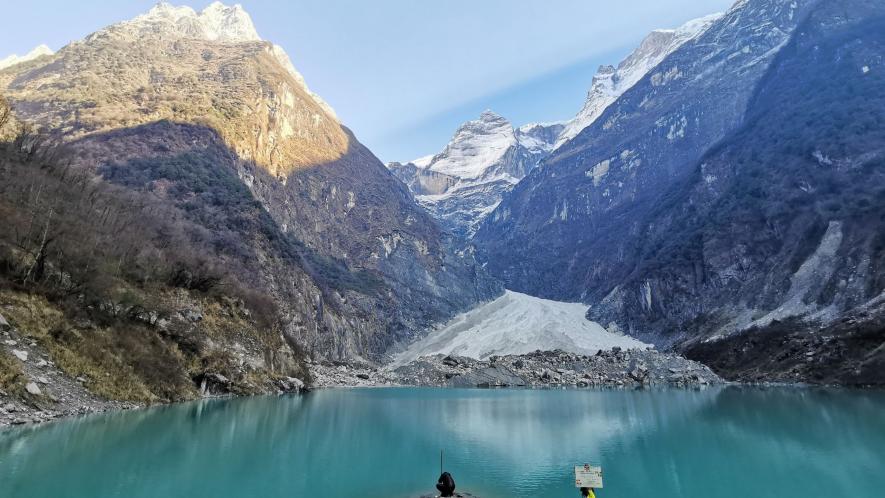
Image Courtesy: Wikimedia Commons
Patna/Kathmandu: More than 7,000 people have lost their lives to Glacial Lake Outburst Floods (GLOFs) in High Mountain Asia in the past 190 years, with 102 deaths from South Lhonak event, which is higher than in the recent past. This was revealed by a new dataset released by the Kathmandu-based International Centre for Integrated Mountain Development (ICIMOD) on Friday (Dec 15).
ICIMOD's dataset is a repository of over 700 GLOFs dating back almost two centuries and including recent devastating events, including GLOFs in South Lhonak in Sikkim and in Thorthomi in Bhutan in October.
According to it, Karakorum, the world’s second-highest mountain range, has seen the highest number of recurrent recorded GLOFs in High Mountain Asia.
Impacts from GLOF events have increased over threefold since the previous regional assessment, showing the importance of consulting local sources for accurate estimates of loss and damage. The development of high-value infrastructure at higher elevations increases exposure to GLOFs.
“It is always a challenge to get historical data on High Mountain Asia because the region is inaccessible, and research here has historically been so difficult,” said Finu Shrestha, a Remote Sensing and Geo-information Analyst at ICIMOD.
“Through painstaking collaboration with regional partners, we have managed to piece together a robust picture of major events in this region dating back to 1833. This provides us with a sense of how hazards are changing in the mountains over time and a way of capturing their impacts. It will help us to track how temperature rises, permafrost thaw and precipitation are driving these events and to monitor, guide, and improve mitigation measures to protect vulnerable human populations, biodiversity and hydropower investments,” Finu Shrestha said.
This latest research study pointed out that 23% of GLOFs were recurrent events, with the highest frequency observed in ice-dammed glacial lakes in the Karakoram region, pointing to ongoing risks for local communities.
It further said that the overall increase in GLOFs is mainly due to better observations and reporting, but the overall damage to infrastructure from these events has likely increased in the recent past. Over half (54%) of GLOFs were triggered by mass movement such as avalanches, rock falls and landslides (such as in Sikkim in 2023), while 18% were due to intense rainfall events. This points to a need for better forecasting of precipitation at altitude as well as mapping of an increasingly unstable cryosphere.
Without a major step up in monitoring, mitigation, and early warning for all, it is likely we will see more major examples of GLOFs, such as South Lhonak, the latest dataset said.
The impacts of GLOFs originating in one country can occur in a second country, with eight GLOF events in China, for instance, having an extensive impact in Nepal.
Finu Shrestha said this dataset serves as a crucial foundation for further scientific investigation, such as enabling regional studies on potential GLOF drivers and providing a robust data basis for downstream impact and risk assessments. The initiative emphasises the crucial need for proactive measures to safeguard vulnerable communities in High Mountain Asia.
The GLOF dashboard visually presents this dataset on a regional map, offering seamless navigation. All data are openly accessible and downloadable for further investigations.
Get the latest reports & analysis with people's perspective on Protests, movements & deep analytical videos, discussions of the current affairs in your Telegram app. Subscribe to NewsClick's Telegram channel & get Real-Time updates on stories, as they get published on our website.









